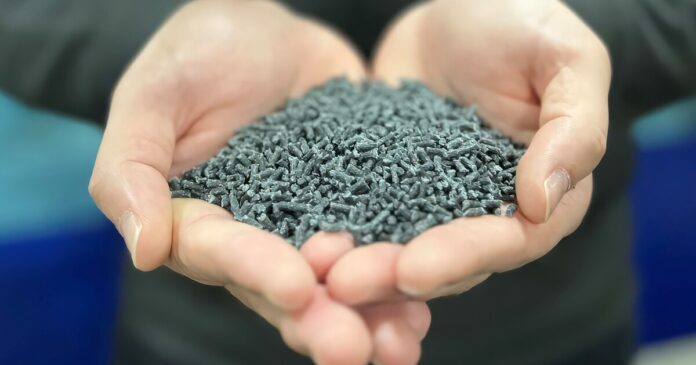Glass-filled polypropylene is already a very commonly used plastic for automotive parts, but could it be improved? Well, yes. A new substance, Gratek, is claimed to make the plastic 20% stronger yet 18% lighter, thanks to the addition of graphene.
Widely hailed as a “wonder material,” graphene takes the form of one-atom-thick sheets of carbon atoms linked to one another in a honeycomb pattern. Along with being the world’s strongest human-made substance, it’s also very flexible, stretchable and chemically stable, plus it exhibits high electrical and thermal conductivity.
It’s no wonder, then, that Nello David Sansone – a post-doctoral researcher working in the University of Toronto’s Multifunctional Composites Manufacturing Laboratory – began investigating methods of integrating graphene nanoplatelets into glass-filled polypropylene. He ultimately developed a technique for doing so while working at auto parts manufacturer Axiom Group, in a partnership with the university.
In previous groups’ attempts to incorporate graphene into automotive components, the material had a tendency to cluster during processing, thus concentrating mechanical stress in unwanted areas and leading to failure.
Sansone got around this problem via a proprietary technique which causes the nanoplatelets to bond only to the glass fibers within the polypropylene matrix, keeping them from clumping. Because the graphene strengthens the fibers, fewer of them need to be used, thus Gratek is approximately 20% stronger and 18% lighter than regular glass-filled polypropylene.
And it should be noted, the material is less than 1% graphene overall. Plus as an added bonus, due to the lower glass content in the plastic, it causes less wear and tear on the machines that are cutting and drilling it.
Mitacs
One potential limiting factor to Gratek is the fact that, because of the graphene in it, it’s limited to being black in color. With that drawback in mind, Sansone has developed another material, Clatek, which utilizes clay-based halloysite nanotubes in place of the graphene nanoplatelets. It reportedly offers performance similar to that of Gratek, but it’s white in color and can be dyed and painted.
Gratek is expected to be contracted to a major automobile manufacturer before the end of this year, while Clatek is expected to be commercially available within two years.
“It has shown real potential to make vehicles lighter, safer, and more sustainable,” Sansone told us. “As for what’s next for me, I’m now working on commercializing another advanced material formulation, known as AegisX, through my start-up NanoMorphix, where we’re developing transparent and textile armor for military, defense, aerospace, and personal protection.”
Sansone was recently the recipient of an award from Mitacs, a government-funded non-profit organization that seeks to foster technical innovation in Canada. Past recipients have developed technologies such as a towable crop-waste-to-biofuel converter, a computer-vision-based flight recorder, an augmented reality feedback system for athletes and a screw-drive amphibious robot.
Sources: Mitacs, Axiom Group


